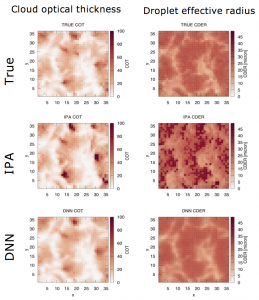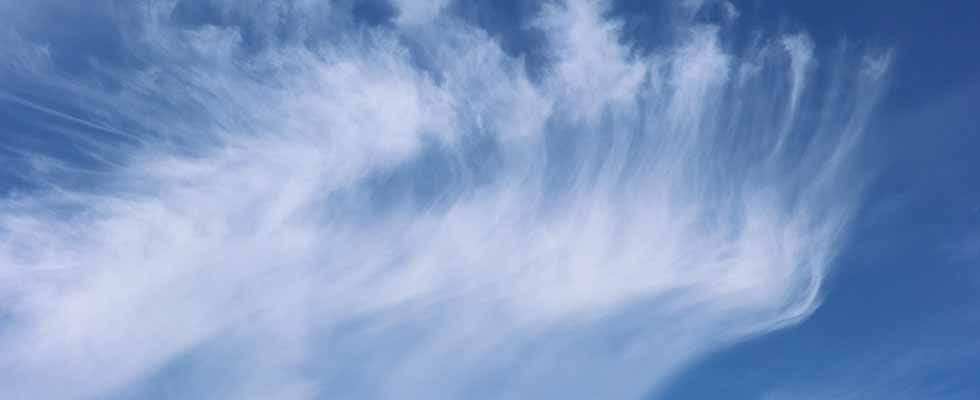We have developed a new method to estimate the cloud physical properties from multispectral, multipixel measurement data from satellite using the deep learning (Okamura, Iwabuchi, Schmidt, 2017). It is the first study (to our best knowledge) using the deep learning for atmospheric remote sensing.
In this study, we have developed deep learning models that use solar reflectance image data at multiple wavelengths in the near infrared and shortwave infrared spectra to simultaneously estimate cloud physical properties (cloud optical thickness and cloud particle effective radius) for multiple pixels. Assuming a three-dimensional distribution of clouds reproduced with a high resolution atmospheric model, we simulated the radiance observed from the satellite using the three-dimensional atmospheric radiative transfer model, and regarded it as pseudo observation data, from which we estimated the cloud properties. We evaluated the accuracy of the cloud physical property estimates by comparing them with the cloud physical property data assumed initially. In the proposed method, errors in both the optical thickness of the cloud and the droplet effective radius were smaller than the existing estimation method (IPA), and remarkable improvement was observed especially in estimating the cloud droplet effective radius (Fig. 1).
Using the deep learning has the advantage that features can be extracted automatically from a large amount of data. It has been shown that the deep learning is effective for solving complex estimation, prediction, and diagnosis problems that were difficult to solve in the past.

Figure 1. Cloud optical thickness (left) and droplet effective radius (right) for initially assumed (true; upper), conventional estimation method (IPA; middle), and the proposed estimation method (DNN; lower). Since the sun height is low and the solar light is incident obliquely from the left side of the screen, three-dimensional radiative transfer causes a large bias on the IPA estimate. In DNN, estimated values are close to the true values, and highly accurate estimation has been made.
Publication
Okamura, R., Iwabuchi, H., and Schmidt, K. S.: Feasibility study of multi-pixel retrieval of optical thickness and droplet effective radius of inhomogeneous clouds using deep learning, Atmos. Meas. Tech., 10, 4747-4759, https://doi.org/10.5194/amt-10-4747-2017, 2017.
